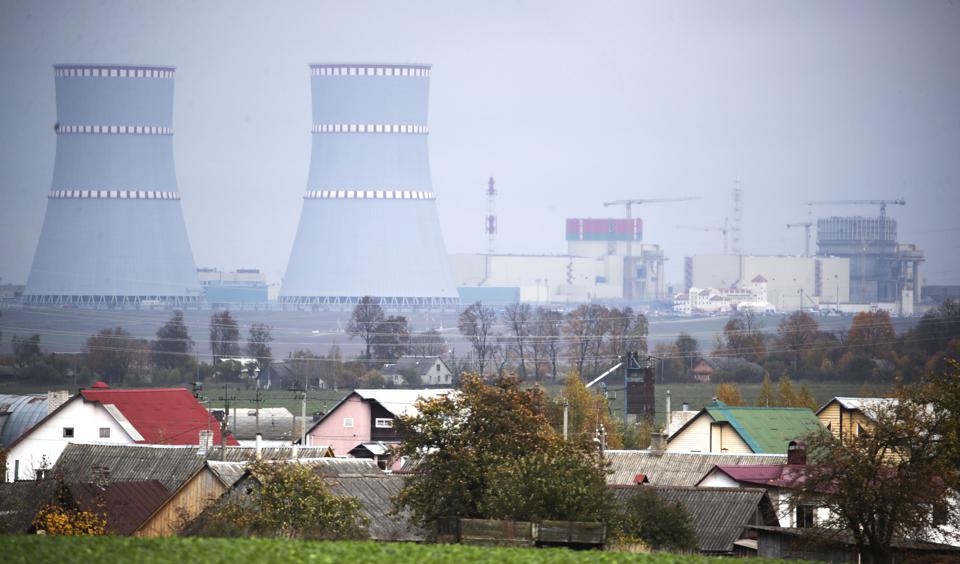As Belarus began loading fuel into its first reactor at the new Russian-built Astravets Nuclear Power Plant (NPP), Russian energy officials announced plans to begin construction of a second reactor at the plant.
According to Alexander Lokshin, First Deputy Director General for Operational Management of Russian state nuclear corporation Rosatom, the second reactor of the Belarusian NPP is scheduled for completion in mid-2022.
"We will work on the second unit on schedule," TASS quoted Lokshin as saying on Friday. "It will be handed over to the customer in mid-2022."
The second reactor will double NPP's total output capacity to 2,400 megawatts (MW). The VVER-1200 reactor was built using the Russian AES-2006 design. The same design will be used for the second reactor. Russia financed the plant with a state loan of up to $10 billion to be paid over the span of 25 years. The plant is being built by Atomstroyexport, a subsidiary of Russia’s state-owned Rosatom.
"We are building many nuclear power plant units across the globe and Belarusian specialists already participate in two construction projects of ours – the Kursk nuclear power plant in Russia and the Rooppur nuclear power plant in Bangladesh," Lokshin said, voicing hope for the further cooperation with Belarusian specialists even after the NPP is commissioned.
The Belarusian NPP Unit 1 became the first unit of the newest Gen 3+ built using Russian technologies abroad. At the moment, there are three power units of this type, which are successfully operated in Russia – two at the Novovoronezh NPP and one at the Leningrad NPP.
Compared to the VVER-1000 reactor, the innovative Gen 3+ power unit operating in the VVER-1200 reactor is safer, more advanced and will be able to boost economic performance.
Since work started in 2011, the project has faced fierce opposition from neighboring Lithuania, whose capital Vilnius is just 50 km (31 miles) away. Concerned about safety and national security, Vilnius has banned all electricity imports from the plant. In addition, Lithuania, along with Estonia and Latvia, is considering slapping fees on power imports from Russia.
Belarus has repeatedly denied that the plant poses a risk and has insisted it meets all International Atomic Energy Agency (IAEA) safety requirements. Between 2012 and 2020, seven key IAEA inspections, which are recommended for countries building their first nuclear plants, were carried out.
The implementation of the 2,400 MW nuclear power plant is a part of Belarus' energy strategy set for 2011-2020. Given the number of oil and gas disputes between Moscow and Minsk, the strategy aims to reduce reliance on Russia as the country’s major energy supplier. Belarus currently relies on Russian gas to generate almost 95 percent of the country’s power.
The plan also outlined the construction of a 1000 MW coal-powered plant, four hydropower stations with a total capacity of 120 MW and wind projects totaling 300 MW. If fully implemented, the strategy would bring the share of power generated using Russian gas down to 55 percent.
Belarus' interest in Russia’s nuclear capabilities stems from Moscow's experience in nuclear engineering and its advanced nuclear technology. Russia’s state-owned nuclear body, Rosatom, is the largest nuclear body in the country and ranks third worldwide in terms of nuclear power generation. The energy giant is also the global leader in the simultaneous implementation of nuclear power plant units, holding the world’s largest portfolio of foreign construction projects.
According to the World Nuclear Association, Rosatom’s ten operating nuclear power plants operate 35 reactors totaling 26,983 megawatts (MW) of power and produces 18.7 percent of Russia's total electricity.







 Iran's senior military leaders described the drone and missile attack on Israel on April 14 night as “successful".
Iran's senior military leaders described the drone and missile attack on Israel on April 14 night as “successful".
 Azerbaijan officially unveiled the logo for the upcoming 29th session of the Conference of the Parties to the United Nations Framework Convention o...
Azerbaijan officially unveiled the logo for the upcoming 29th session of the Conference of the Parties to the United Nations Framework Convention o...
 Iranian President Ebrahim Raisi warned Israel that it would face a "real and extensive" response if it makes any "mistake" following Tehran’s missi...
Iranian President Ebrahim Raisi warned Israel that it would face a "real and extensive" response if it makes any "mistake" following Tehran’s missi...
 The Kazakh authorities have increased their arbitration claims against international oil companies involved in the development of the Kashagan oil ...
The Kazakh authorities have increased their arbitration claims against international oil companies involved in the development of the Kashagan oil ...



